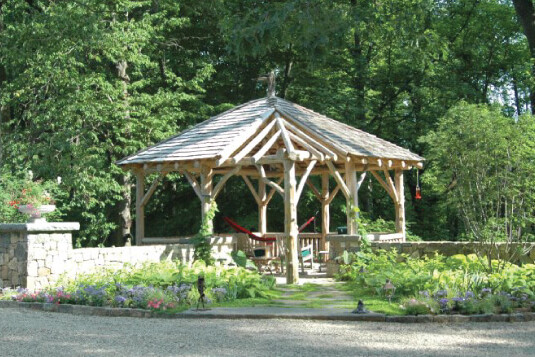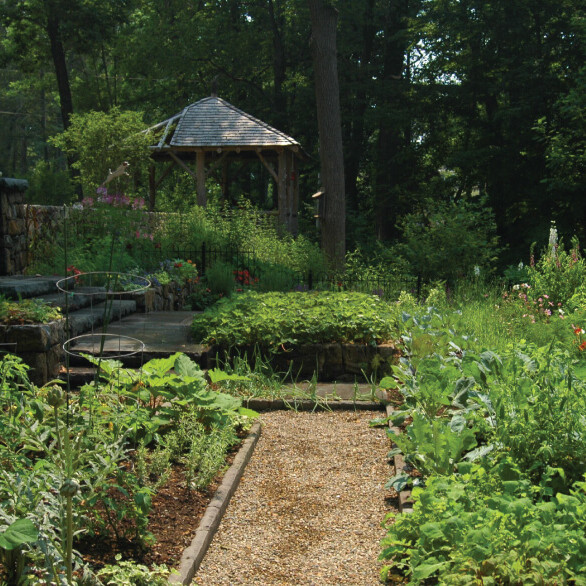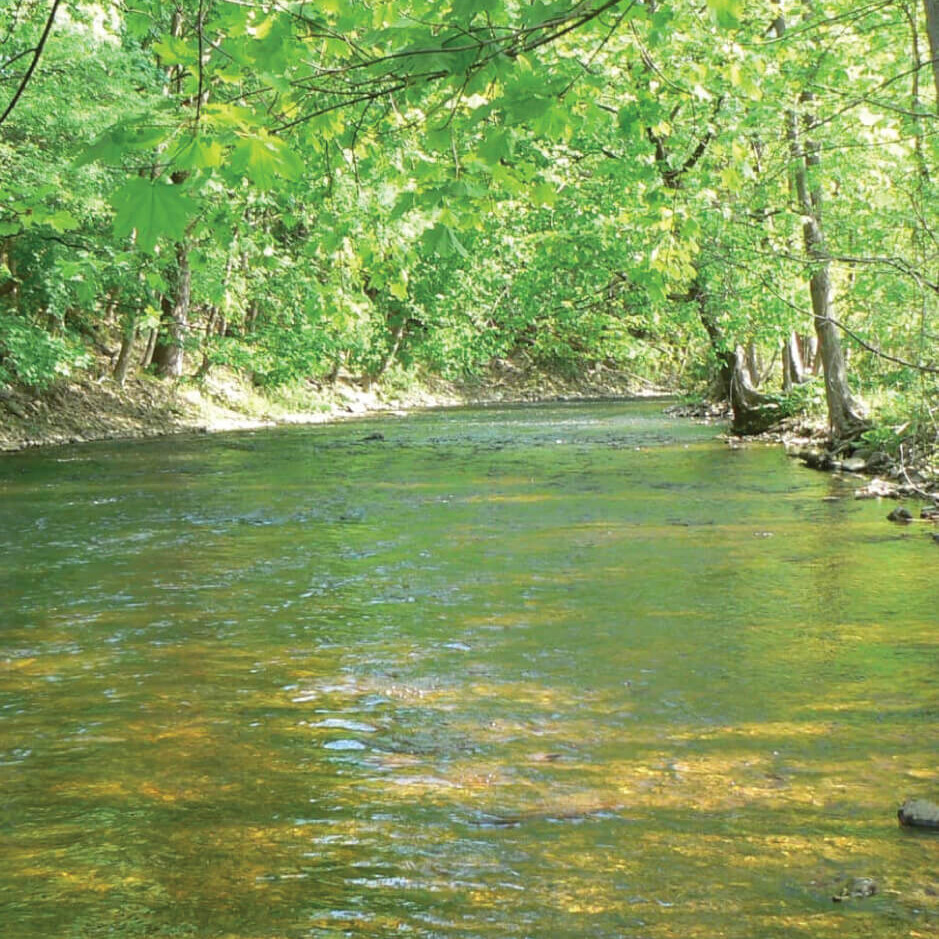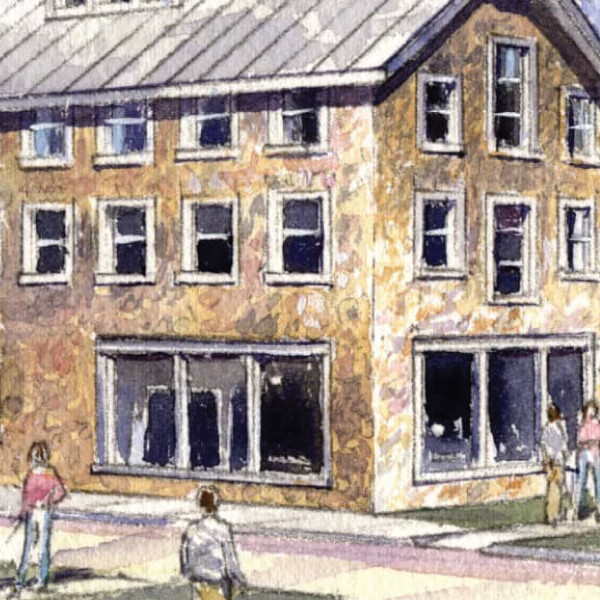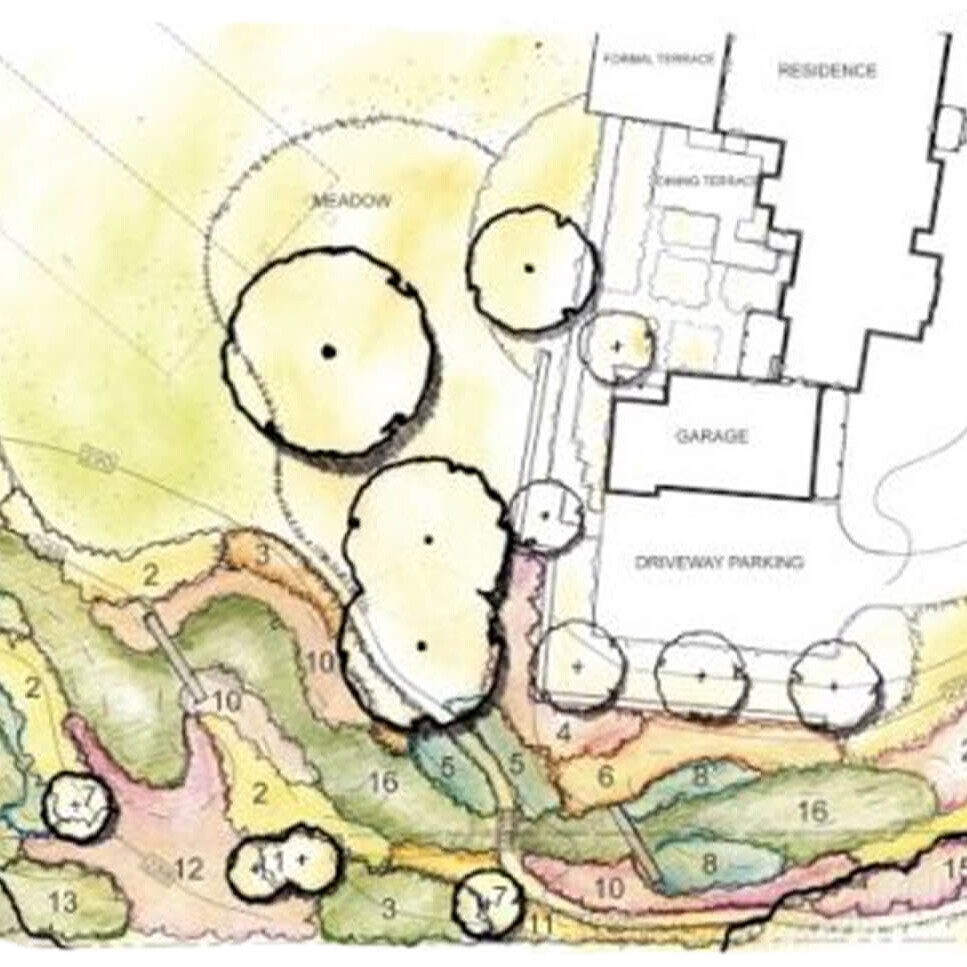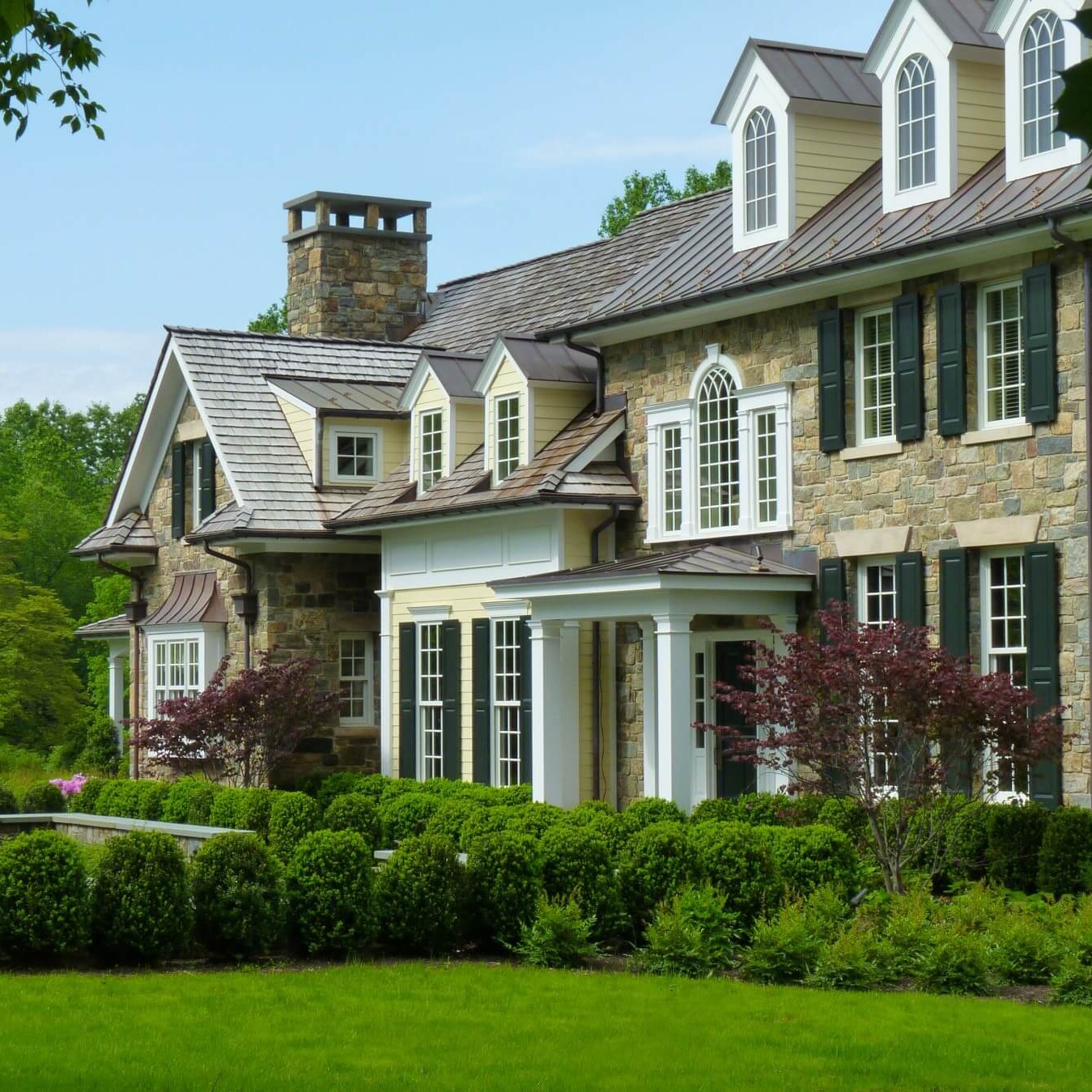Visioning and nature’s own processes provide the opportunity for a designed “ecosystem”
that is environmentally responsible and fulfilling. Collecting, conserving, and reusing are essential components to this integrated system.
Project Details
This project involved a home converted from stables located on a six-acre property. The homeowners approached Back to Nature to help transform the outdoor spaces surrounding the home to be in tune with their organic, nature loving, and family-oriented lifestyle. The project incorporated several environmentally conscious strategies, and to this day the outdoor spaces continue to develop as a reflection of the clients’ green lifestyle.
A Journey of Outdoor Rooms and Sustainable Living
The main goal of this project was to create a series of outdoor rooms that would “unfold” similar to the indoor rooms of a home. The project started with a site master plan that evaluated the barriers between indoors and out. Over the next seven years, Back to Nature continued working with the client as the project evolved in the areas of growing organic food, restoring native habitats, integrating alternative energies and storm water practices, promoting a healthy and inviting atmosphere for family and friends, and connecting the homeowners with their land.
Maximizing Potential Through a Design Process
An integrated design process has played a value-adding role in realizing the potential of this project. There is an ongoing collaboration between the clients, landscape architect, other design professionals, project installers, and maintenance managers, who all are engaged regularly in the project. Over the course of this outdoor remodel, stakeholders have included the clients, the landscape architect, architects, contractors from all trades, engineers, arborists, organic consultants, apiary specialists, forest managers, municipal agents, and neighbors.
Balancing Investment and Returns Within The Project
Costs are an important consideration for all projects; this venture was no different. They must be understood and woven into the fabric of the project. The project team has anticipated and realized both tangible and intangible returns on the investment costs of this project, including a decreased reliance on purchasing produce and a greatly expanded living space.
The main goal was to create a series of outdoor rooms
that would “unfold” similar to the indoor rooms of a home.
Design Objectives
- Incorporate food into the landscape
- Provide a landscape the uses agricultural as a design element
- Provide a garden shed that looks historic
- Use natural stone walls in the landscape
- Design a herb garden with pea gravel paths
- Mix copper, iron and cedar for fences
- Outdoor kitchen built into the wall
- Use large boulders to create a natural spa



